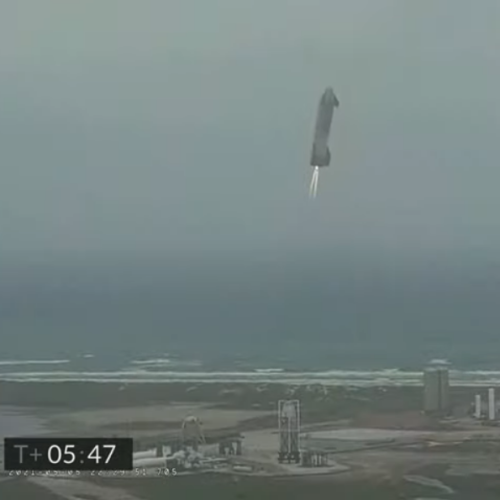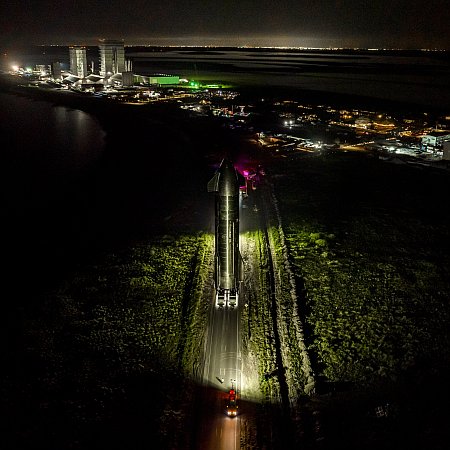SpaceX completes six-engine static fire test of Starship prototype #25
SpaceX yesterday successfully completed a six-engine static fire test of Starship prototype #25, the prototype that will be stacked on top of Superheavy prototype #9 and flown on the next orbital test flight.
Musk said in an interview on Saturday that more than a thousand upgrades were planned before the next flight of the Starship/Super Heavy. Including a significant change to the stage separation system that will see the Starship ignite its engines while still attached to the Super Heavy. Improvements are also being made to the Raptor engines to prevent leaks of super-heated gas which resulted in multiple engine failures during the April launch.
Major repair work and modifications are also underway to the Starship launch pad, after extensive damage occurred during the April 20 test flight.
Musk has also said the company will be ready to launch by August. While it is certainly possible that engineering will cause a slight delay to that schedule, more likely SpaceX will be ready, and then have to sit and wait for the FAA and the Biden administration to issue a launch permit. I am predicting it will not be issued by then, and likely not for months afterward.
SpaceX yesterday successfully completed a six-engine static fire test of Starship prototype #25, the prototype that will be stacked on top of Superheavy prototype #9 and flown on the next orbital test flight.
Musk said in an interview on Saturday that more than a thousand upgrades were planned before the next flight of the Starship/Super Heavy. Including a significant change to the stage separation system that will see the Starship ignite its engines while still attached to the Super Heavy. Improvements are also being made to the Raptor engines to prevent leaks of super-heated gas which resulted in multiple engine failures during the April launch.
Major repair work and modifications are also underway to the Starship launch pad, after extensive damage occurred during the April 20 test flight.
Musk has also said the company will be ready to launch by August. While it is certainly possible that engineering will cause a slight delay to that schedule, more likely SpaceX will be ready, and then have to sit and wait for the FAA and the Biden administration to issue a launch permit. I am predicting it will not be issued by then, and likely not for months afterward.





